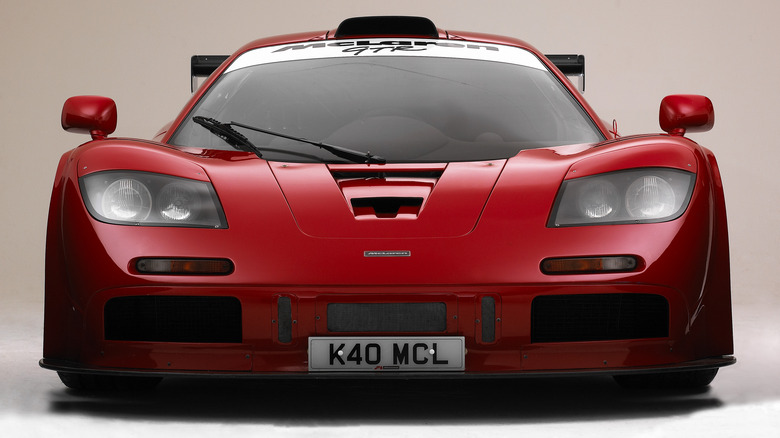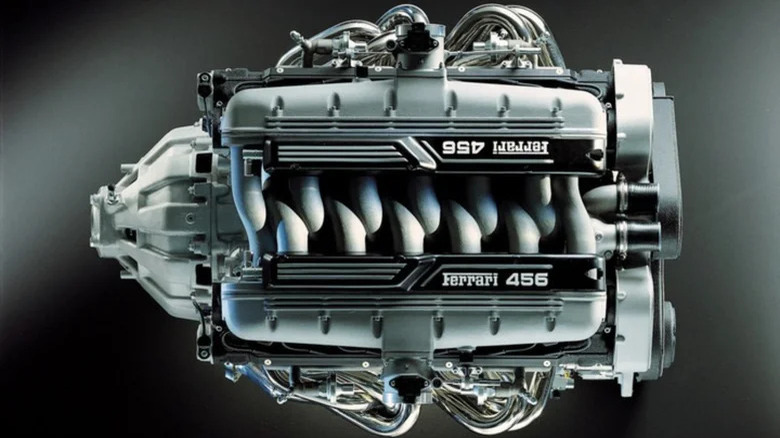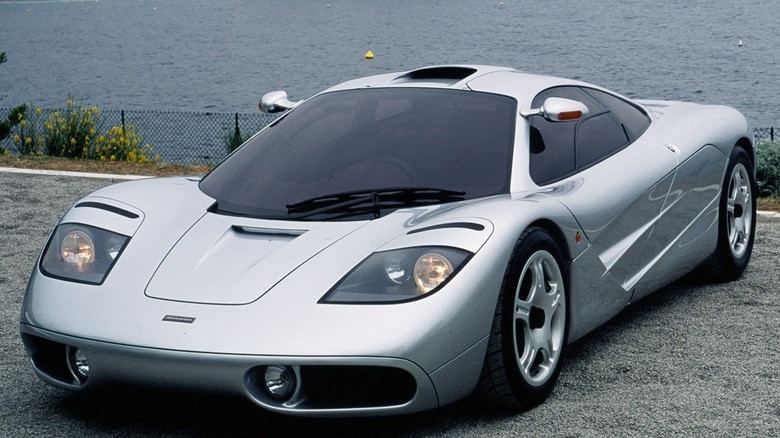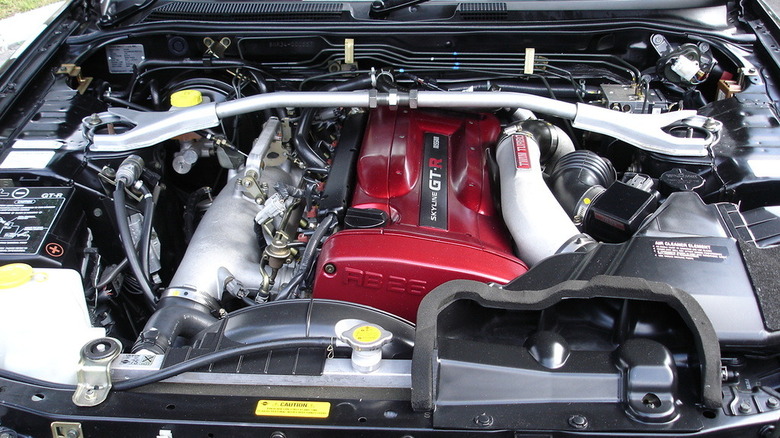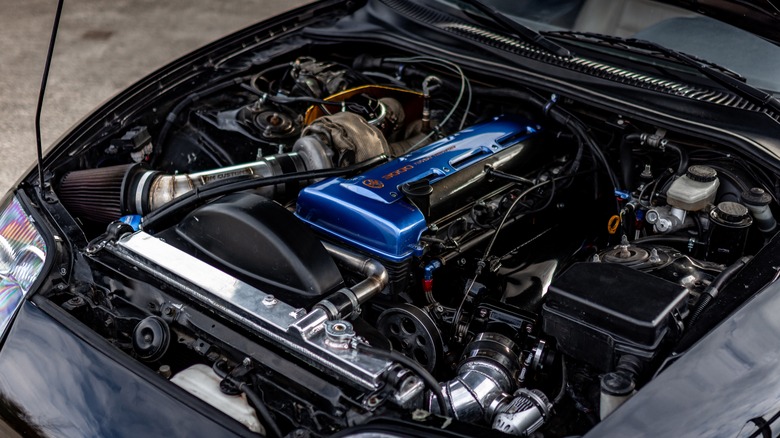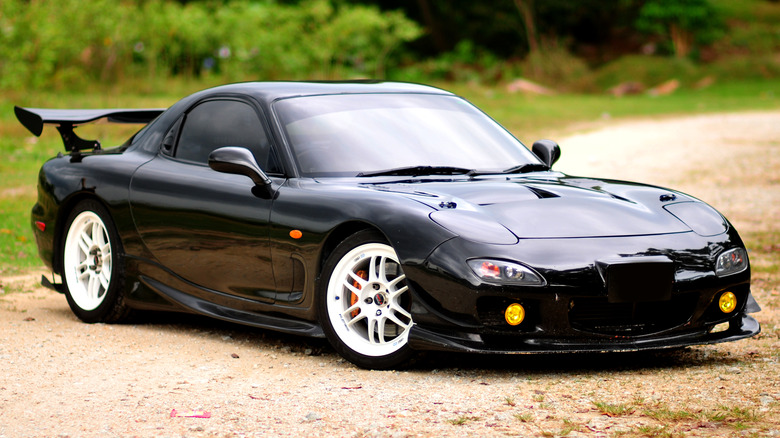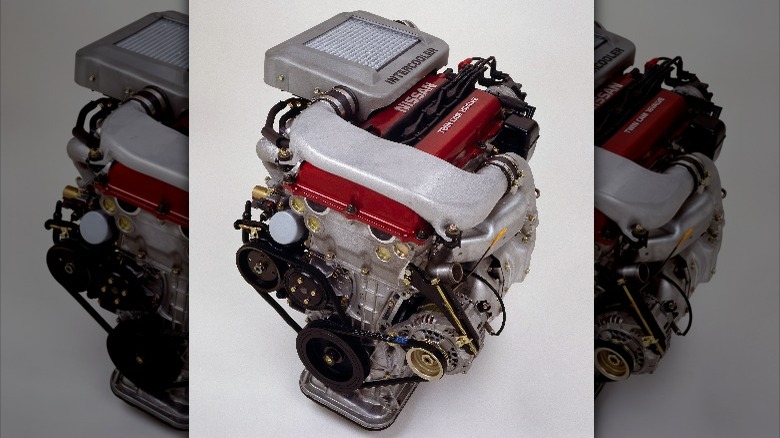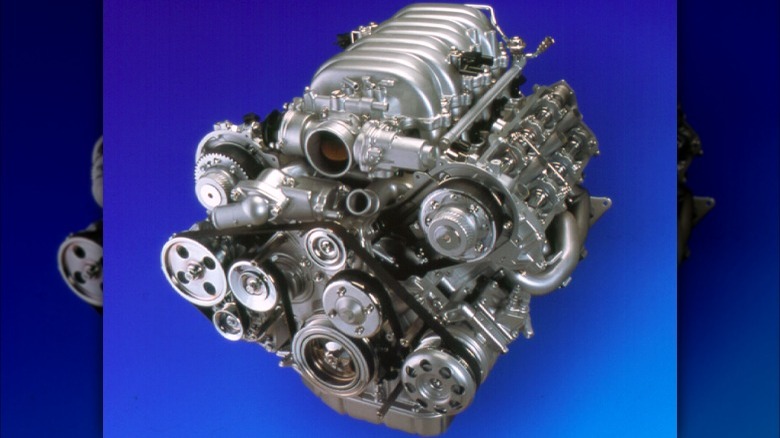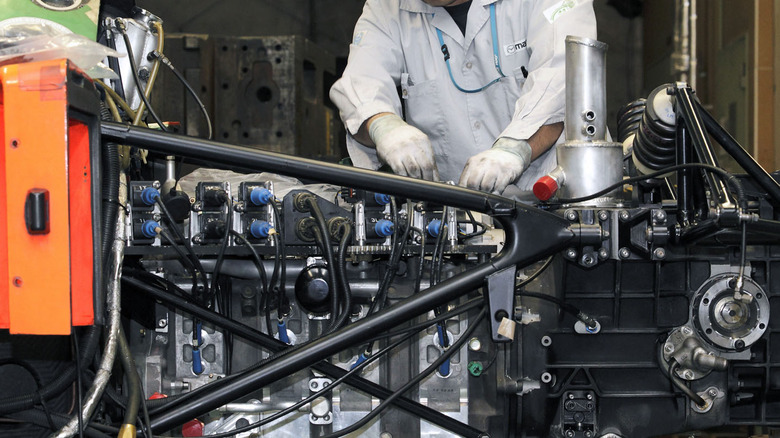8 Of The Coolest 1990s Engines And The Key Features That Made Them So Special
The 1990s was a decade of firsts for the auto industry. The Acura NSX had proved that cutting-edge performance cars could also be practical daily drivers, while cars like the Nissan Skyline GT-R and Toyota Supra opened up a new world of tuning possibilities. The McLaren F1 redefined the boundaries of supercar performance, drawing on racing technology to create a road car capable of unprecedented speeds. Towards the end of the decade, the launch of the BMW X5 and Lexus RX proved that there was a market for luxury, road-focused SUVs. On the flipside, the minivans that had previously proved to be sales hits were suddenly no longer in demand.
Among all this change, some of today's most revered engines hit the market and transformed their respective segments. While it was Japanese brands that would debut many of the decade's most innovative mills, European manufacturers would also prove to be exceptionally productive during this time, overhauling their lineups to compete with the upstarts from the Far East. We've picked out eight of our favorite engines from the '90s, each of which featured an innovation that made it stand out from the rest.
Ferrari F116/F133
The Colombo V12 is widely considered to be Ferrari's most legendary engine, powering many of the brand's best-loved race cars, including the ultra-valuable 250 GTO. Creating a replacement was no easy task, and in fact it took until 1992 for the venerable Colombo engine to be finally retired. It was replaced by the F116/F133, which was the first all-new Ferrari twelve-cylinder engine since the Boxer engine of the '70s. The F116 debuted in the 456, powering all of the brand's V12 grand tourers up to and including the 612 Scaglietti.
It was, in turn, usurped by the F140 V12 that debuted in the Enzo and which continues to power Ferrari's latest cars including the Purosangue. However, the F116/F133's contribution to the Prancing Horse's V12 lineage should not be underestimated. The Colombo V12 was, by the time it was retired, a long way from its heyday. Its final application was in the 412i, a car that's still considered undesirable by many Ferrari collectors today thanks to its unconventional styling and available three-speed auto transmission.
The V12 in the 456, and later the 550 and 575, proved to buyers that Ferrari could still make contemporary, potent grand tourers, balancing all-out power with the refinement that owners had come to expect. It wasn't as revolutionary in terms of technology or performance as some of the other engines here, but its importance in the history of one of the world's most prestigious automotive brands makes it worth remembering.
BMW S70/2 V12
Although it can trace its roots back to the largely forgotten 7-Series luxury sedan of the '80s, BMW's V12 engine can be found at the heart of one of the greatest road cars ever made. This version of the V12 was, of course, a very different beast to the one powering the 7-Series. It featured cutting-edge composites derived from Formula 1 technology and utilized its manufacturer's racing expertise to be both lighter and more compact than any equivalent V12 engine seen in a road car before it. That manufacturer's name was McLaren, and the car in question was the iconic F1.
The S70/2 V12 produced around 620 horsepower and more than 450 lb-ft of torque in standard F1 guise, although later iterations of the car like the LM boosted those figures considerably. To keep weight to a minimum, the block was made from aluminum alloy, while magnesium alloy was used for components like the oil pump and cam covers. A variable valve timing system and intelligent emissions control system were also used to keep emissions within regulatory limits without compromising power.
The engine generated so much heat that McLaren had to line the engine bay with gold –- even today, that makes it quite the spectacle to see up close. It remains among the highest output-per-liter naturally aspirated engines ever made, although it was recently bested by the Cosworth V12 powering Gordon Murray's latest hypercar, the GMA T.50.
Nissan RB26DETT
While its output wasn't close to the McLaren F1 from the factory, the Nissan RB26DETT inline-6 boasted unprecedented reliability that allowed it to be modified to produce power figures far in excess of what even the most powerful F1 could offer. It takes only a few simple modifications to increase the output to 400 horsepower, and with the right parts, it can reliably produce horsepower figures well into four-digit territory.
The RB26's talents were a product of its time. Japanese manufacturers were seemingly unstoppable, competing against each other to produce ever more over-engineered powerplants. In fact, all of this occurred in spite of a gentleman's agreement between the major Japanese carmakers that their official outputs would be limited to 276 horsepower.
The engine was originally developed as a homologation requirement for Nissan to enter Group A racing, and so many of the engine components are designed to withstand outputs of around 600 horsepower without reliability being affected. Aftermarket part selection is huge and varied, giving builders the ability to pick a setup exactly to their liking. Unlike many other '90s engines where factory replacement parts are getting harder to find, the RB26 is still available to buy new from Nissan's Nismo Heritage division, albeit only through a handful of Japanese dealers.
[Featured image by X-Ray91270 via Wikimedia Commons | Cropped and scaled | Public Domain]
Toyota 2JZ-GTE
Another tuner's favorite is the Toyota 2JZ-GTE, an inline-6 engine that can be found most famously under the hood of the MkIV Supra Turbo. Much like the RB26DETT, the turbo 2JZ can be modified to produce several times its factory output with minimal changes. Officially, American-market Supra Turbos made 320 horsepower and 315 lb-ft of torque. For JDM cars, that figure was claimed to be just 276 horses thanks to the gentleman's agreement. However, the engine's true power output was higher than the factory figures even when stock.
Not that too many owners kept the car bone stock. It's easy to reach 400 to 500 horsepower with just a few modifications, and the most powerful examples can reach around 2,000 horses. The biggest issue with using a 2JZ for a modern build is actually finding one in the first place –- the Supra has become a sought-after collectors' item, and so prices have risen accordingly. It's slightly easier to find one in Japan, where the engine also appeared in sedans like the Toyota Aristo. Still, most cheap American Supras will either now have been thoroughly abused or be a lower-spec example with the much less desirable, naturally aspirated 2JZ-GE under the hood.
Mazda 13B-REW
Mazda is — and has been for many decades now — one of the last manufacturers to believe in the capability of the rotary engine. The 13B-REW is proof that Mazda's efforts to develop the unique design were warranted, as it provided a suitably potent heart for one of the brand's most celebrated cars, the FD RX-7. It featured a specially developed sequential twin-turbo system, the first of its kind, to eliminate the turbo lag that had plagued earlier turbocharged engines. It wasn't the first 13B to be produced, as one had already been in use for years in earlier generations of the RX-7, but the twin-turbo version was particularly special.
With just 1.3L of displacement, Mazda wrung enough power out of the engine to hit the 276 horsepower limit of the gentleman's agreement. There was further room for improvement too, as in the following decades, tuners have built engines with more than double the quoted stock output, albeit often at the cost of reliability.
Despite not producing a new car with a rotary engine for more than a decade, Mazda continues to make new 13B engines today, with a small team of craftsmen at the brand's factory handling everything from machining parts to final assembly. Each new engine is completed by a single engineer, and just two examples are produced every day. They're available to order from Mazda directly, both to replace broken engines in aging cars and, in theory, to create new rotary builds, too.
Nissan SR20DET
The '90s was a golden decade for JDM tuning, and one of the most popular engines to modify was the four-cylinder Nissan SR20DET. It most famously powered the S-chassis line of models including the JDM 240SX, and boasts one of the most comprehensive aftermarkets of any four-cylinder engine. While it's not as bulletproof as the likes of the RB26, it can still handle significant power increases with only simple modifications. Unlike the six-cylinder though, it's not available to buy new –- an extremely limited number have been built by third-party tuner Mercury Japan, but other than that, all examples will now be 30 or so years old now.
Since they've always been popular with tuners, it's no easy task to find a clean, stock example today, and even then, its internal parts will have degraded significantly since it was first built. The golden era might be over, then, but the SR20DET remains one of the JDM engine icons, even if it's no longer so easy to start a fresh build today.
Toyota 1UZ-FE
At the 1989 Detroit Auto Show, Toyota unveiled one of its most ambitious projects ever: a luxury sedan to rival the Mercedes-Benz S-Class called the Lexus LS400. At the heart of this all-new car sat a V8 engine that had been put through more than 1.6 million miles of on-the-road testing before even making it to production. Referred to as the 1UZ-FE, its design drew from racing engines and was considerably tougher than it needed to be in order to provide the ultimate reliability.
Its power output wasn't revolutionary, with 256 horsepower and 260 lb-ft of torque available at launch. However, the smoothness with which it deployed those horses was unlike any Toyota product before it. That wasn't much of a surprise, as it was the result of a project that had taken six years, a huge team of engineers, and a billion dollars in development cash.
The LS400 took the luxury car market by storm, offering the technology and refinement associated with the top German flagships while undercutting them on price. It helped transform Lexus from an overlooked outsider to a key player in the industry, and in the process, racked up some unbelievably high mileage. The highest mileage examples of the 1UZ-equipped LS400 have crossed the million-mile mark, and even less well-cared-for examples can rack up several hundred thousand miles without complaint.
Mazda R26B
Thanks to a last-minute rule change, the Mazda R26B rotary engine made its mark on racing history, winning the 24 Hours of Le Mans in 1991. Mazda's entry for that year, the 787B race car, had attempted the same feat the year before, with no luck. Originally, changing regulations for the 1991 season meant that Mazda's engine would no longer be eligible for entry, but when manufacturers were unable to meet the new requirements in time, the decision was made to postpone the change for another year. This gave Mazda one last shot at the title, and they took full advantage.
The engine received a suite of upgrades for the 1991 race, including a new air intake, a new ignition system, and new injectors. It pushed the engine's total output to around 690 horsepower without compromising the reliability needed for a 24 hour race. After the issues the previous year, reliability was still a big unknown as the car rolled up to the starting grid at La Sarthe, but it would turn out to be no problem this time around.
The 787B covered 3,059 miles over the course of the race, taking the overall win and becoming the first Japanese manufacturer ever to do so. It also became the first, and last, rotary-powered car to ever win, as the rule change that was implemented in 1992 meant Mazda was forced to retire its championship engine.
